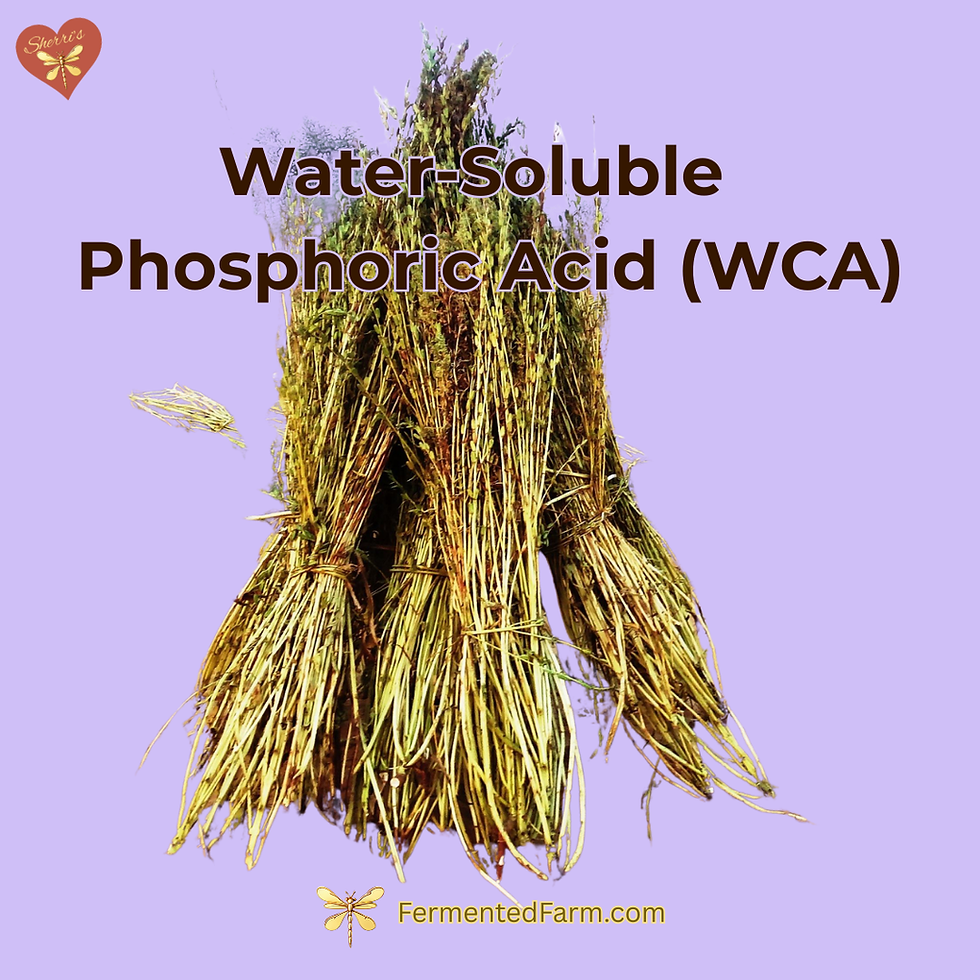MANAGEMENT STRATEGIES Polyculture, Hedgerows, IPM
- Sherri Miller

- Jan 6, 2022
- 4 min read

WHAT IS NATURAL FARMING? Part 8 MANAGEMENT STRATEGIES
Polyculture, Hedgerows, IPM
POLYCULTURE: COMPANION PLANTING & PLANT DIVERSITY
Nature grows wild. It’s true. Nowhere in Nature will you see endless acres of a single species of plant. A wild grassland, for example, may not look like anything but a sea of grass from the top of a hill. But once you start looking up close you will see many different species of grasses and similar plants. You will find some plants growing prostrate along the ground under the grasses. You will find an immense variety of wildflowers. In fact, what may look like a sea of single type of grass may actually contain a hundred species or more.
In the wild plants collect into groups depending on local conditions. If we want to grow with the power of Nature we must also grow plants in proper places and as collections of species. Monocrops are a good way to feed and proliferate pest and disease species. By planting a mix of species, pests and disease find it harder to find and infect as many hosts. Insure plants are put it the right physical environment (proper sun, shade, space, rainfall and similar factors), and make sure you have a variety of plants. There is much information available to find out which plants do well together, and which ones do not get along. Adding wildness to your garden for environmental balance and resiliency can be as simple as interplanting crops with flowers and herbs.
HEDGEROWS & FENCEROWS
Just as we look to establish health and diversity in the soil, we look to establish health and diversity on our properties. The margins are good places to establish permanent wild areas, a place of refuge and resources for beneficial species. Hedgerows and Fencerows can provide flowers, herbs, and medicinals, as well as fodder and feed for our animals. Hedgerows and Fencerows can be beneficial for people and animals, and can be used to make inputs for growing more food. They can also provide beauty, privacy, and act as a windbreak.
Hedgerows and Fencerows are not new. In Europe you can still see centuries old hedgerows. Permaculture talks about having a little bit of Zone 5, essentially wilderness, close to Zone 1, the home site, not just at the far edges of the property. Hedgerows and fence rows can provide that wildness. Now even the US Department of Agriculture NRCS is promoting the use of Hedgerows and Fencerows because they help prevent soil erosion, offer pollinator habitat, and add diversity and health to the environment. We can create them to be a source of food for us, feed for our animals, habitat for beneficials, and beauty for all.
INTEGRATED PEST MANAGEMENT
There is now a lot of information on Integrated Pest Management, referred to widely as IPM. Practices include using beneficial insects, such as ladybug beetles, to control pests rather than pesticides. Pest and disease control happens by balancing the ecological system, rather than targeting offending species. Removal of a pest can have unintended consequences.
There is a famous example used in ecology of coyotes and rabbits. When coyotes kill too many livestock the ranchers, understandably, eliminate the coyotes. However, this leads to an explosion of the rabbit population. This then leads to rabbits devastating farms. Only when coyotes and rabbits are kept in balance are both the farmer and the rancher happy.
Balance is an extremely important concept in ecology and in Natural food production systems. If everything is in balance, the entire system is smooth and effective. Blindly killing anything or everything that attacks your plants can lead you to a worse place in the end. The effects of balance are so extreme that even geology can be changed. The most famous example of this is when the rivers changed course when wolves were reintroduced back into Yellowstone.
One more example of the importance of balance. A local farmer had a lot of centipedes. Centipede bites hurt. They had chickens. Chickens love to eat centipedes. So as they worked their land they helped the chickens find and eat up all the centipedes on their land. It turns out that centipedes eat cockroaches. It also turns out that these cockroaches carried a parasite that infected the chickens. The chickens ended up badly infected with worms in their eyes. Had they left the centipedes alone, letting the chickens eat only the ones they found on their own, the chickens never would have gotten sick. There would not have been an explosion of the cockroach population and subsequently the explosion of the parasite that infected the eyes of the chickens, and ultimately killed them. That’s right, controlling centipedes killed their chickens. An unintended consequence.
Keep in mind as you learn to control pests in Natural ways, that balance and stability are just as important as diversity. In fact, if you add diversity to the point you have no stability, you simply have chaos. And that is no way to grow food. Learn what healthy ecosystems look like in Nature in your area. Try to create growing systems that look like that. Be like Nature.




Comments